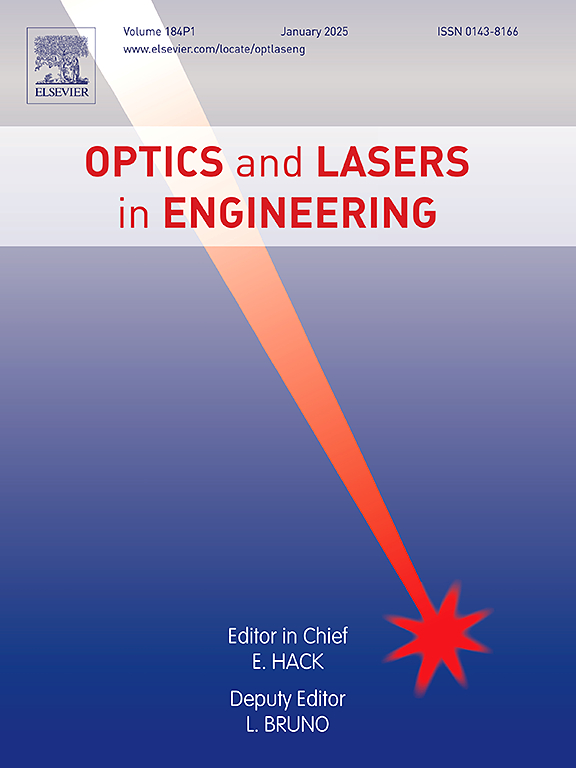High-speed single-shot multiplane phase retrieval using quadratic distorted gratings for coherent diffraction imaging
IF 3.5
2区 工程技术
Q2 OPTICS
引用次数: 0
Abstract
Multi-plane coherent diffraction imaging reconstructs complex light fields from multiple axial diffraction intensities. However, the time overhead caused by multiple recordings limits the observation of fast dynamic processes, and the offset error during motion affects the reconstruction performance. We introduce a novel phase-retrieval method capable of capturing diffraction patterns from multiple planes in a single exposure, avoiding mechanical motion inherent in traditional methods. This method exploits the unique feature of quadratic distorted gratings, which have different focal lengths at different diffraction orders, thereby enabling the transportation of light fields from multiple planes to distinct regions within the detection plane and achieving spatial multiplexing. To recover the amplitude and phase maps from the segmented sub-intensity sequences within the detection plane, we employed an efficient algorithm known as single-beam multiple-intensity reconstruction with dual mean. The feasibility of the proposed method was validated through reconstruction experiments involving resolution targets and phase plates. Furthermore, given that the modulator used is a self-supporting pure amplitude element, this method is highly suitable for phase imaging with high spatiotemporal resolution in extreme ultraviolet, X-rays, and other short-wavelength segments.
高速单镜头多平面相位反演利用二次畸变光栅相干衍射成像
多平面相干衍射成像从多个轴向衍射强度重建复杂的光场。然而,多次记录造成的时间开销限制了对快速动态过程的观察,并且运动过程中的偏移误差影响了重建性能。我们介绍了一种新的相位恢复方法,能够在一次曝光中捕获多个平面的衍射图案,避免了传统方法固有的机械运动。该方法利用二次畸变光栅在不同衍射阶上具有不同焦距的独特特性,使光场从多个平面传输到检测平面内的不同区域,实现空间复用。为了从检测平面内分割的亚强度序列中恢复振幅和相位图,我们采用了一种称为双均值单束多强度重建的高效算法。通过涉及分辨目标和相板的重建实验,验证了该方法的可行性。此外,由于所使用的调制器是自支撑的纯幅度元件,因此该方法非常适合于极紫外、x射线和其他短波段的高时空分辨率相位成像。
本文章由计算机程序翻译,如有差异,请以英文原文为准。
求助全文
约1分钟内获得全文
求助全文
来源期刊

Optics and Lasers in Engineering
工程技术-光学
CiteScore
8.90
自引率
8.70%
发文量
384
审稿时长
42 days
期刊介绍:
Optics and Lasers in Engineering aims at providing an international forum for the interchange of information on the development of optical techniques and laser technology in engineering. Emphasis is placed on contributions targeted at the practical use of methods and devices, the development and enhancement of solutions and new theoretical concepts for experimental methods.
Optics and Lasers in Engineering reflects the main areas in which optical methods are being used and developed for an engineering environment. Manuscripts should offer clear evidence of novelty and significance. Papers focusing on parameter optimization or computational issues are not suitable. Similarly, papers focussed on an application rather than the optical method fall outside the journal''s scope. The scope of the journal is defined to include the following:
-Optical Metrology-
Optical Methods for 3D visualization and virtual engineering-
Optical Techniques for Microsystems-
Imaging, Microscopy and Adaptive Optics-
Computational Imaging-
Laser methods in manufacturing-
Integrated optical and photonic sensors-
Optics and Photonics in Life Science-
Hyperspectral and spectroscopic methods-
Infrared and Terahertz techniques
 求助内容:
求助内容: 应助结果提醒方式:
应助结果提醒方式:


